Frost On the Inside of Your Windshield? (What Causes It and How to Stop It)
It’s a familiar winter morning ritual. You go to your car, ready to begin your commute, only to find a thin veil of frost coated on the inside of your windshield. You scramble to clear the icy layer that obscures your view so you can get going.
But why does frost form on the inside when it’s the outside temperature that dropped below freezing overnight? Let’s look at why this happens so you can prevent frost from forming next time.
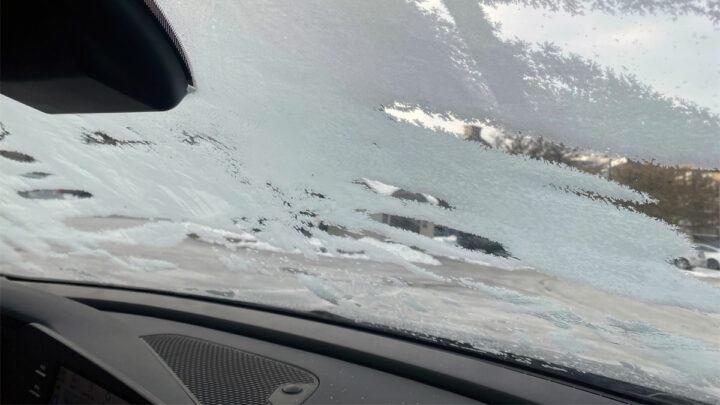
Understanding Frost Formation
When you find frost on the inside of your windshield, it’s usually a battle between temperature, humidity, and ventilation within your car.
Temperature Fluctuations – The air has a tipping point known as the freezing point where the temperature drops enough that moisture in the air transitions from a liquid to a solid state – that’s your frost. Most often, this happens when temperatures outside dip below the freezing mark and the inside hasn’t been warmed up yet.
Moisture and Humidity – Think of your car’s interior as a small-scale weather system. Moisture can sneak into this system from several sources and this affects relative humidity (how much moisture the air inside your car holds). With high humidity, as the temperature falls, the air can hold less water, which then condenses on the windshield.
Ventilation and Air Circulation – If your car’s ventilation system isn’t working optimally, or if you shut it off too soon, that can trap humid air inside. Without good circulation, you won’t get a chance to replace that damp air with drier outside air before it gets cold and leads to frost buildup.
Causes of Internal Windshield Frost
When you find frost on the inside of your windshield, it’s usually the result of at least one of the following issues:
#1 – Excessive Moisture Sources
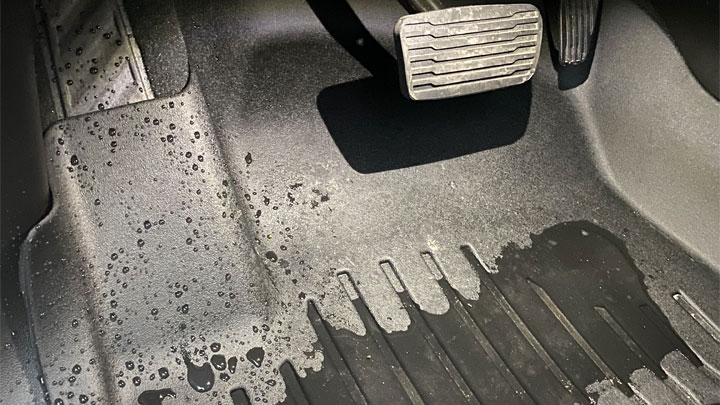
Your vehicle’s interior can turn into a mini greenhouse, trapping moisture that eventually leads to frost. Bringing in rain or snow on your shoes and clothes, spilling drinks, or even your breath can increase moisture levels.
What to do? Keep the inside as dry as possible. If you notice water on your floor mat, take a rag or paper towels and absorb as much of it as you can.
#2 – Leaks and Broken Seals
Sometimes, your car might have leaks you’re unaware of. Check your car’s door and window seals for any signs of damage. Water slipping in through these cracks can be the root cause of your frosty windshield problem.
A clogged sunroof drain tube is often the culprit. When this happens, water often drains directly onto your floor board.
#3 – Poor Ventilation Systems
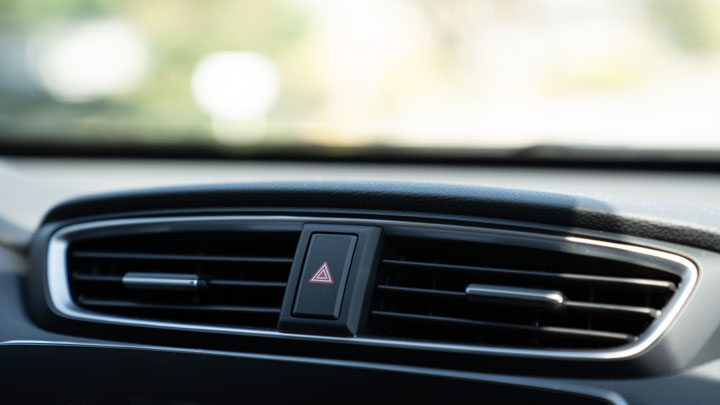
Air circulation within your vehicle is a big deal. If your car’s ventilation is not up to snuff, moisture won’t escape properly. This leads to buildup and, you guessed it, frost on the inside.
Make sure you’re getting good airflow from your vents (including windshield defroster) and that your A/C system is working properly. In most cars, your A/C system is being used when you turn on defrost mode as it works as a dehumidifier.
Check your cabin (A/C) air filter as well and clean it or replace if necessary. A clogged filter is a common reason for poor ventilation inside your car. It’s typically between $10-$20 and an easy DIY replacement in most vehicles.
#4 – Outside Weather Conditions
Lastly, Mother Nature plays her part, too. Winds carrying moisture or sudden drops in temperature outside can influence your vehicle’s interior climate.
It’s a balancing act to juggle the temps, but keeping your car’s interior and exterior temperature close can help prevent ice from forming on the inside.
Preventative Measures
Keeping your windshield clear of internal frost involves controlling moisture and enhancing your car’s ability to fend off the chill. Dive into these specific strategies to keep your mornings frost-free.
Reducing Humidity Inside the Vehicle
You should know by now that moisture = frost.
So, grab some silica gel packs (save the packets from the packaging of various products you purchase throughout the year) or a moisture absorber and stash them in your ride. They’ll suck up that pesky humidity in no time.
Got rice or charcoal briquettes? They’re budget-friendly dehumidifiers. Even cat litter can come to your rescue. Just toss a sock full of one of those options under the seats.
Sealant and Insulation Improvement
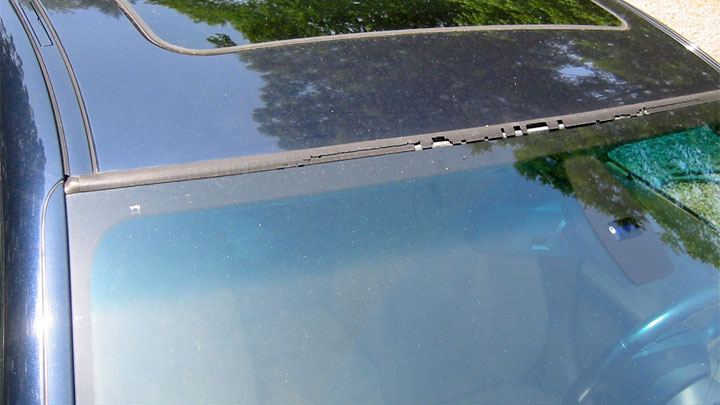
Sometimes, those sneaky drafts cause all the trouble. Check your vehicle’s window seals and door gaskets. Find a gap? A silicone-based sealant can patch it up as a temp solution if you don’t have the time or money to properly replace the seal/gasket.
Insulate the Windshield
Installing a windshield insulation cover helps prevent a drastic temperature differential between the car’s interior and exterior. The cover acts as a barrier retaining interior heat against the windshield. Even a car cover will help during winter.
Less extreme temperature difference means condensed moisture is less likely to freeze into hard-to-remove frost.
Daily Practices For a Clear Windshield
To combat frost buildup inside your car, adopt a few daily habits that ensure a clear windshield, even on the coldest mornings.
Effective Window Cleaning
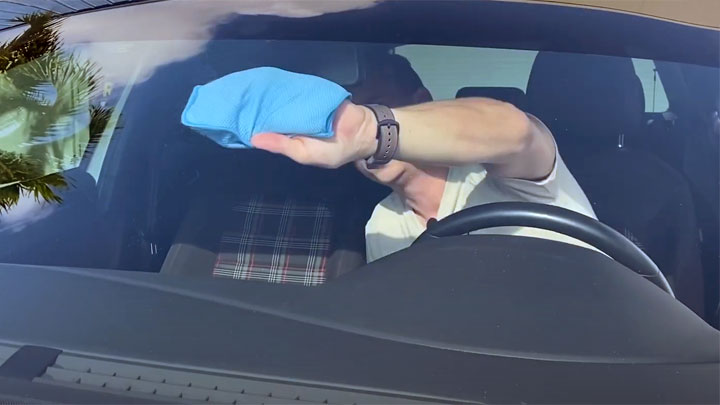
Keep your inside windshield clean since a clean surface resists frosting up quite a bit. You can use Rain-X (inside and out) as a protective layer against frost.
Shaving cream will also work in a pinch; just spread a thin layer on the inside of the glass and wipe it off. The soapy film helps prevent condensation.
Turn on Defrost
Your car’s defrosting mechanism is there for a reason. When it’s chilly, start your vehicle a few minutes early and engage the defrost setting. Make sure you adjust the air recirculation setting to bring in fresh, dry air, reducing the cabin’s moisture level.
Note: It should go without saying but don’t start up your vehicle and then go back inside the house while it warms up with car doors unlocked. Either use your remote start feature or lock that car doors. In certain areas, just DON’T leave your vehicle running unattended—period.

Don’t Turn Off Your HVAC System
We’ve already mentioned the importance of airflow. Despite that, many drivers simply turn off their car’s ventilation when they feel the inside temperature is fine. Don’t do that!
In cooler months, your car’s HVAC system should always be turned on to at least the lowest speed to circulate outside air into the cabin. Speaking of which, make sure the system is not set to “recirculate” as this simply moves around (humid) air that’s already in the cabin.
Driving by a dairy cow farm? Turn on recirculate. The other 99% of the time? Turn off recirculate.
Alternative Absorbent Methods
Sometimes, traditional methods need a boost. As already mentioned, stash a few silica gel packs or dehumidier pads in your vehicle’s interior to absorb moisture.
Alternatively, sprinkle a bit of salt on a damp cloth and wipe your windows—it lowers the freezing point, helping to ward off frost (similar to how ice melt works on your driveway).
Dealing With a Frosty Emergency

When you’re dealing with winter weather, clear visibility is crucial for safe driving. If you find yourself with frost covering the inside of your windshield and you’re in a hurry, here’s what to do.
First off, start up your car and crank your car defroster to the max to slowly melt the ice. While that’s working its magic, grab a plastic scraper to gently scrape away at the frost. Smaller scrapers work best when you’re dealing with the curvature of the inside windshield.
So it doesn’t happen again the next day, mix up a solution of three parts vinegar to one part water and apply it the night before to prevent buildup. Just be wary of your car’s paintwork.
- Replace the Engine or Replace the Car? (11 Factors to Consider) - Apr 11, 2024
- Plastic Piece Dragging Under Your Car? (What It Is and What To Do) - Mar 21, 2024
- Timing Belt vs Timing Chain (What’s the Difference?) - Feb 27, 2024
